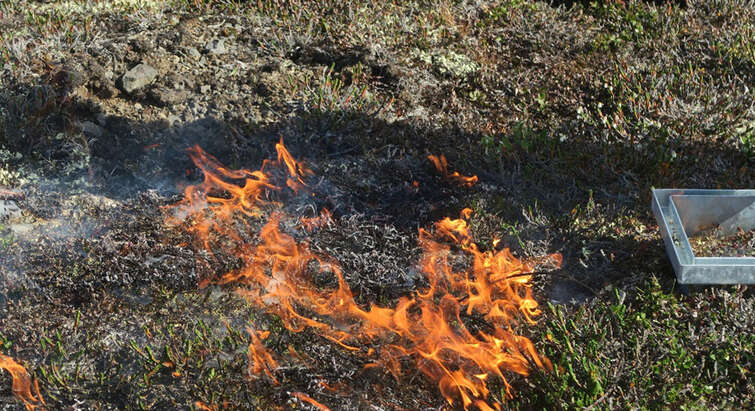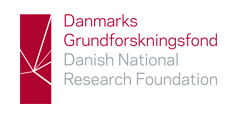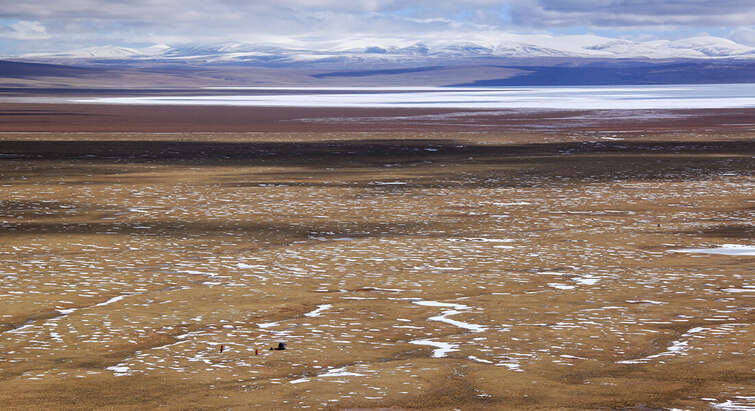

På den nordlige halvkugle er 24% af alle isfri landområder1 svarende til 19 millioner kvadratkilometer mere eller mindre præget af permafrost. Størstedelen af dette areal findes i Sibirien, Canada, Alaska og Grønland.
- I dele af det nordlige Sibirien og Canada kan permafrosten være mere end 700 meter tyk.
- Permafrost rummer 1700 milliarder tons organisk materiale svarende til næsten halvdelen af al organisk materiale i samtlige jorde1, fordi puljen er opbygget over flere tusinde år og kun langsomt omsættes under de kolde forhold i Arktis. Mængden af kulstof i permafrost svarer til fire gange så meget kulstof, som er blevet frigjort til atmosfæren som følge af menneskelige aktiviteter i moderne tid2.
- Den globale opvarmning formodes at være dobbelt så kraftig i Arktis i forhold til andre dele af Jorden5. Intergovernmental Panel on Climate Change (IPCC) vil i deres femte rapport opstille scenarier for fremtiden, hvor temperaturen i Arktis vil stige mellem 1,5 og 2,5°C i 2040 og med 2-7,5°C i 2100.
- Når klimaet bliver varmere, tør permafrostlaget helt eller delvist i dele af landskabet. I områder, hvor iskapper smelter og gletsjere trækker sig tilbage, vil ny permafrost dannes.
- Permafrosten forsvinder ikke fra Grønland, for i store dele af Grønland er permafrosten mere end 100 meter tyk. Det er kun den øverste 1-2 m permafrost, som er truet af optøning inden for de kommende år.
- Permafrost kan omfatte både jordlag og fast klippegrund. Klipper indeholder ikke organisk materiale, mens jordlagene rummer store mængder organisk materiale. Hvis jordlagene tør i forbindelse med den globale opvarmning, kan opvarmningen øge mikroorganismers nedbrydning af det organiske materiale.
- Områder dækket af permafrost er ofte en mosaik af områder med græsagtige planter, heder med planter i lyngfamilien, lavstammet krat med pilebuske, samt moser, småsøer og elve. I områderne der grænser op til Arktis er permafrost udbredt i åbne skove med få meter høje træarter som birk, fyr, lærk og gran.
- Plantedækket over permafrost er i Grønland domineret af få hårdføre og nøjsomme planter som arktisk pil, kantlyng, stenbræk, fjeldsimmer og forskellige arter mos, lav, græsser og halvgræsser. Under de ekstreme levebetingelser i højarktis bliver selv 100 år gamle individer af arktisk pil kun få cm høje. I Rusland, Skandinavien og Canada er enorme
Områder med permafrost dækket af nåle- og birkeskov.
Når det bliver varmere, vil plantevæksten i Arktis øges, og trægrænsen flytter nordpå.
- Forskellige grupper af mikroorganismer kan danne kultveilte, metan, lattergas og en række andre drivhusgasser, når permafrostlag tør. Kultveilte dannes af et væld af svampe og bakterier, når de nedbryder organisk materiale fra gamle plantedele i jorden. Metan dannes udelukkende af en bestemt gruppe af archaea (bakterielignende mikroorganismer) og omsættes til kultveilte af bestemte bakterier. Lattergas dannes af bestemte bakterier, som også kan omdanne lattergas til atmosfærisk nitrogen (N2).
- Målt over en 100 årig periode har metan 25 gange så stort varmepotentiale i atmosfæren som kultveilte. Den dannede metan kan delvist omdannes til kultveilte af mikroorganismer i de øverste jordlag, inden gasserne frigives fra jordoverfladen.
- Ingen ved med sikkerhed, hvor mange tons drivhusgasser optøet permafrostjord udsender hvert år, men en kvalificeret vurdering2 lyder på 110-231 milliarder tons CO2-ækvivalenter (ca. halvdelen fra kultveilte og den anden halvdel fra metan) i 2040 og 850-1400 milliarder tons i 2100. Dette svarer til et gennemsnitligt årligt udslip på 4-8 milliarder tons CO2-ækvivalenter i perioden 2011-2040 og 10-16 milliarder tons CO2-ækvivalenter i perioden 2011-2100 som følge af optøning af permafrost. Til sammenligning var det menneskeskabte udslip af samtlige drivhusgasser i 2010 på ca. 48 milliarder tons CO2-ækvivalenter3. Frigivelse af drivhusgasser fra optøet permafrost til atmosfæren kan øge den globale opvarmning yderligere.
- Et enkelt gram jord fra aktivlaget kan indeholde flere end en milliard bakterieceller. Hvis man lagde bakterierne fra ét kilo jord op på en lang række, ville de danne en kæde på 1000 km. Antallet af bakterier i permafrostjord varierer meget, typisk fra 1 til 1000 millioner per gram jord4. De fleste af disse bakterier samt jordlagenes svampe kan ikke dyrkes i laboratoriet, men mikroorganismernes identitet kan afsløres ved hjælp af DNA-baserede teknikker.
- Permafrost kan indeholde store mængder af is, der frigives som vand, når permafrosten tør. Det giver anledning til, at jordlag falder sammen, og at opløst stof, herunder organisk materiale, næringsstoffer og forurening, kan transporteres langt væk med flod- eller havvand.
- Permafrostens egenskaber kan sjældent vurderes fra overfladen eller fra satellitbilleder, Derfor er det nødvendigt at lave boringer ned gennem permafrosten for at måle dens udbredelse og tilstand.
- Et varmere klima og mindre permafrost kan åbne op for en række fordele i Grønland fx i relation til landbrug og tildels indvinding af råstoffer.
Kilder
- Tarnocai et al. 2009. Soil organic carbon pools in the northern circumpolar permafrost region. Global Biogeochemical Cycles 23, GB2023
- Schuur et al. 2011. High risk of permafrost thaw. Nature 480, 32-33
- UNEP 2011. Bridging the Emissions Gap. A UNEP Synthesis Report. 56 p. UNEP, Nairobi, Kenya
- Hansen et al. 2007. Viability, diversity and composition of the bacterial community in a high Arctic permafrost soil from Spitsbergen, Northern Norway, Environmental Microbiology 9, 2870-2884 – samt flere referencer i denne. Yergeau et al. 2010. The functional potential of high Arctic permafrost revealed by metagenomic sequencing, qPCR and microarray analyses. The ISME Journal 4, 1206-1214
- IPCC 2007. Summary for policy makers. In: Climate Change 2007: The physical basis. Working group I contribution to the fourth assessment report of the Intergovernmental Panel on Climate Change (eds. Solomon et al.). Cambridge University Press, Cambridge, UK.
Fast facts about permafrost
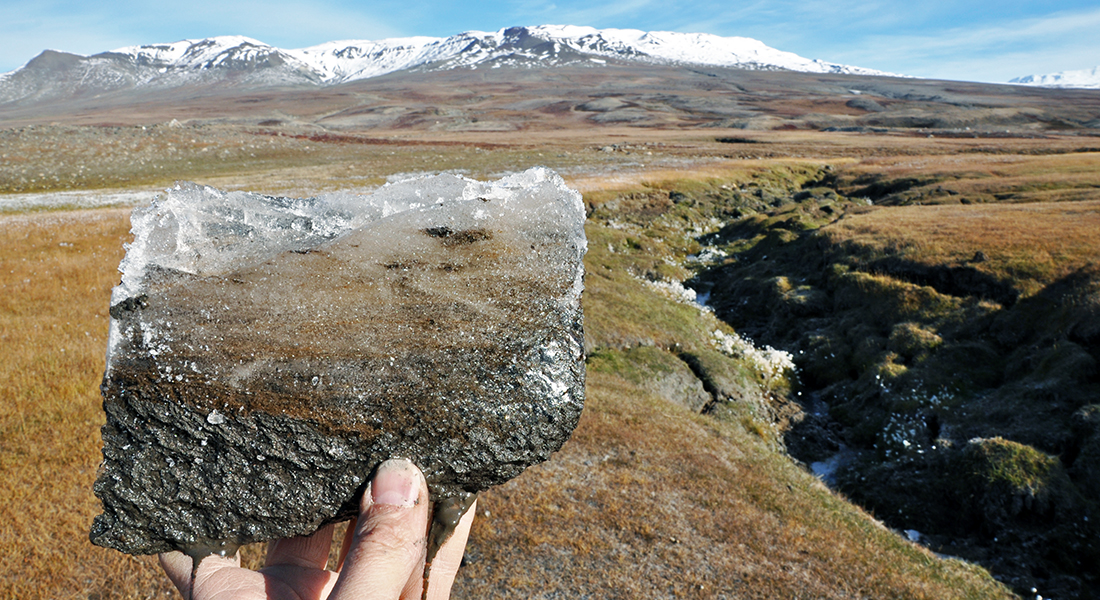
Active layer thickness varies with the season, but is 0.3 to 4 meters thick (shallow along the Arctic coast; deep in southern Siberia and the Qinghai-Tibetan Plateau).
In the Northern Hemisphere, 24% of the ice-free land area, equivalent to 19 million square kilometer1, is more or less influenced by permafrost. Most of this area is found in Siberia, Canada, Alaska and Greenland.
Looking for more detailed information see Ice-free Greenland book
- In northern Siberia and Canada, the permafrost can extend down to depths of more than 700 meters.
- Permafrost contains 1700 billion tons of organic material equaling almost half of all organic material in all soils1. This pool was built up over thousands of years and is only slowly degraded under the cold conditions in the Arctic. The amount of carbon in permafrost is four times the carbon that has been released to the atmosphere due to human activities in modern time2.
- Arctic temperatures are expected to increase at roughly twice the global rate5. The Intergovernmental Panel on Climate Change (IPCC) will in their fifth report establish scenarios for the future, where the temperature in the Arctic will rise between 1.5 and 2.5°C by 2040 and with 2 to 7.5°C by 2100.
- When the climate becomes warmer, the permafrost layer thaws completely or partially in parts of the landscape. In areas where ice caps are melting and glaciers are retreating, permafrost will again be formed.
- Permafrost does not disappear from Greenland, because the permafrost is more than 100 meters thick in large parts of Greenland. Only the upper 1-2 m of permafrost is threatened by thawing in the coming years.
- Permafrost may include both soil and solid rock. Rocks contain no organic material, while soil contains large amounts of organic material. If soil layers thaw due to global warming, the warming may increase the microbial decomposition of organic material.
- Areas covered by permafrost are often a mosaic of areas with herbaceous plants, ericaceous plants, low scrub with willow bushes, and marshes, ponds and streams. In the areas bordering the Arctic permafrost is common in open forests with tree species such as birch, pine, larch and spruce.
- The plant cover of permafrost in Greenland is dominated by a few hardy and hardy plants such as the Arctic Willow, heather, saxifrages, Dryas and various species of mosses, lichens, grasses and sedges. Under the extreme growing conditions in the high Arctic even 100 year old specimens of Arctic Willow are just a few centimeters high. In Russia, Scandinavia and Canada large areas of permafrost are covered with pine and birch forest. Due to global warming, plant growth in the Arctic increases and the tree line moves north.
- Different groups of microorganisms produce carbon dioxide, methane, nitrous oxide and other greenhouse gases when permafrost thaws. Carbon dioxide is formed by a multitude of fungi and bacteria during break down of old plant material in soil. Methane is formed exclusively by a specific group of archaea (bacteria-like microorganisms) and converted to carbon dioxide by certain groups of bacteria. Nitrous oxide is formed by certain bacteria, which may also convert the nitrous oxide to atmospheric nitrogen (N2).
- Measured over a 100 year period, the warming potential of methane in the atmosphere is 25 times higher than carbon dioxide. Methane formed in deep soil layers may be converted into carbon dioxide by micro-organisms in the upper layer of soil prior to the release from the soil surface to atmosphere.
- No one knows for sure how many tons of greenhouse gases are emitted from thawed permafrost soils, but recently2 it was estimated that 110-231 billion tons of CO2 equivalents (about half from carbon dioxide and the other half from methane) will be emitted by 2040, and 850-1400 billion tons by 2100. This corresponds to an average annual emission rate of 4-8 billion tons of CO2 equivalents in the period 2011-2040 and annually 10-16 billion tons of CO2 equivalents in the period 2011-2100 as a result of thawing permafrost. For comparison, the anthropogenic emission of all greenhouse gases in 2010 is approximately 48 billion tons of CO2 equivalents3. Release of greenhouse gases from thawed permafrost to the atmosphere may increase global warming.
- One gram of soil from the active layer may include more than one billion bacteria cells. If placed along each other, bacteria from one kilogram of active layer soil will form a 1000 km long chain. The number of bacteria in permafrost soil varies widely, typically from 1 to 1000 million per gram of soil4. Most of these bacteria and fungi in permafrost soil can not be cultured in the laboratory, but the identity of the microorganisms can be revealed by DNA-based techniques.
- Permafrost may contain large quantities of ice, which is released as water when the permafrost thaws. This may cause soil collapse and increase transport of solutes, including organic matter, nutrients and pollution, which may be carried long distances by river or sea water.
- Permafrost properties can rarely be assessed from the surface or from satellite images, so it is necessary to drill through the permafrost to measure its distribution and condition.
- A warmer climate and less permafrost can open up a number of advantages for the people of Greenland, e.g. in relation to agriculture and extraction of minerals.
References
- Tarnocai et al. 2009. Soil organic carbon pools in the northern circumpolar permafrost region. Global Biogeochemical Cycles 23, GB2023
- Schuur et al. 2011. High risk of permafrost thaw. Nature 480, 32-33
- UNEP 2011. Bridging the Emissions Gap. A UNEP Synthesis Report. 56 p. UNEP, Nairobi, Kenya
- Hansen et al. 2007. Viability, diversity and composition of the bacterial community in a high Arctic permafrost soil from Spitsbergen, Northern Norway, Environmental Microbiology 9, 2870-2884 – and additional references in this paper. Yergeau et al. 2010. The functional potential of high Arctic permafrost revealed by metagenomic sequencing, qPCR and microarray analyses. The ISME Journal 4, 1206-1214
- IPCC 2007. Summary for policy makers. In: Climate Change 2007: The physical basis. Working group I contribution to the fourth assessment report of the Intergovernmental Panel on Climate Change (eds. Solomon et al.). Cambridge University Press, Cambridge, UK.
News

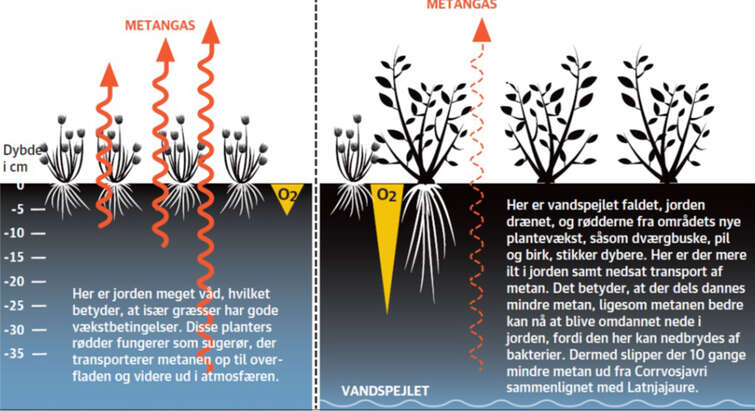
The importance of science editors in Danish news

PhD defense Lena Hermesdorf
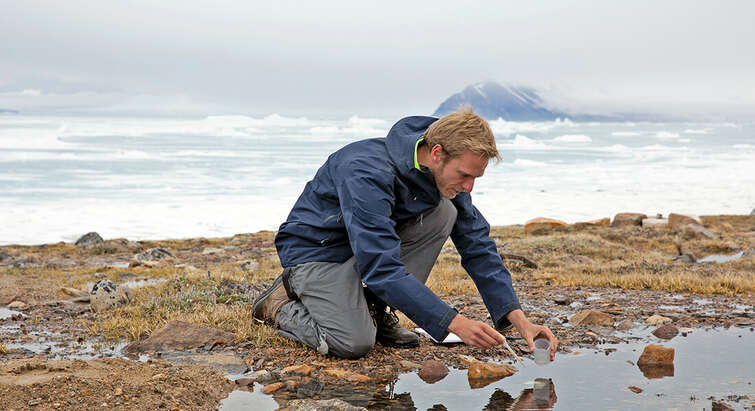
PhD defense Sebastian Zastruzny
